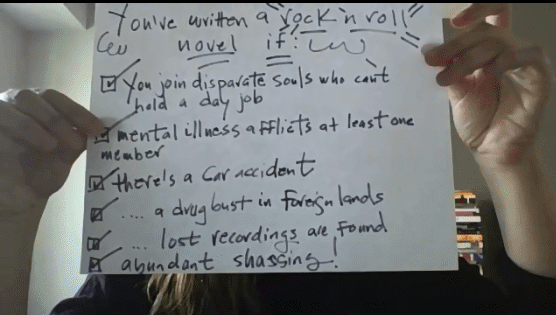Many daycare, preschool, pre-K, and elementary school teachers have their own classroom libraries. They usually develop these libraries out of pocket, or through donations; adding a new book is a way to build that library and increase the number of books kids have ready access to.
Here are a number of relatively new books that would be great additions to classroom libraries – and the majority of the authors and illustrators are BIPOC. I’ve separated them into categories by age, but please don’t treat that as a hard-and-fast rule.
Ages 2+
Hello, Hello by Brendan Wenzel
Carrot & Pea by Morag Hood
Thank You, Omu! by Oge Mora
Dim Sum for Everyone by Grace Lin
A Parade of Elephants by Kevin Henkes
Rain! by Linda Ashman, illustrated by Christian Robinson
Grumpy Pants by Claire Messer
Ages 3+
Saturday by Oge Mora
Want to Play Trucks? by Ann Stott, illustrated by Bob Graham
Hank’s Big Day by Evan Kuhlman, illustrated by Chuck Groenink
Julian Is A Mermaid by Jessica Love
Ralph and Rita’s Rotten Day by Carmen Agra Deedy, illustrated by Pete Oswald
The Adventures of Beekle: the Unimaginary Friend by Dan Santat
Lift by Minh Le, illustrated by Dan Santat
Dreamers by Yuyi Morales
Don’t Touch My Hair! by Sharee Miller
Mae Among the Stars by Roda Ahmed, illustrated by Stasia Burrington
Ages 4+
Ada Twist, Scientist by Andrea Beaty, illustrated by David Roberts
Wemberly Worried by Kevin Henkes
Owen by Kevin Henkes
Jabari Jumps by Gaia Cornwall
My Best Friend by Julie Fogliano, illustrated by Jillian Tamaki
The Someone New by Jill Twiss, illustrated by EJ Keller
Bilal Cooks Daal by Aisha Saeed, illustrated by Anoosha Syed
Amy Wu and the Perfect Bao by Kat Zhang, illustrated by Charlene Chua
World Pizza by Cece Meng, illustrated by Ellen Shi
Unstoppable! by Adam Rex
Alma and How She Got Her Name by Juana Martinez-Neal
Fry Bread by Kevin Noble Maillard, illustrated by Juana Martinez-Neal
First Day of School
The Class by Boni Ashburn, illustrated by Kimberly Gee
All Are Welcome by Alexandra Penfold, illustrated by Suzanne Kaufman
School’s First Day of School by Adam Rex
Truman by Jean Reidy
The King of Kindergarten by Derrick Barnes, illustrated by Vanessa Brantley-Newton
We Don’t Eat Our Classmates by Ryan T. Higgins
As an additional resource, Tinkergarten pulled together a list of “24 Books with Black Protagonists by Black Authors.” Representation matters – all kids need to see themselves reflected in literature (positively!). And if your students are homogeneous, then diverse books can serve as “windows” to show them that the world is full of all kinds of people. (The “windows, mirrors, and sliding glass doors” analogy was coined by Rudine Sims Bishop; Debbie Reese, founder of American Indians in Children’s Literature, would add “curtains” as well, that certain stories may be kept within a culture.)
Teachers, please chime in on the topic of classroom libraries. Do you welcome donations? Do you keep a wish list? Do you (or your students) have favorite titles, either for read-alouds or reading alone? What else should parents/caregivers/guardians/volunteers know about classroom libraries?



















 Q: Do you write with [genre] restraints? Is Jasper the spiritual center of the novel?
Q: Do you write with [genre] restraints? Is Jasper the spiritual center of the novel?